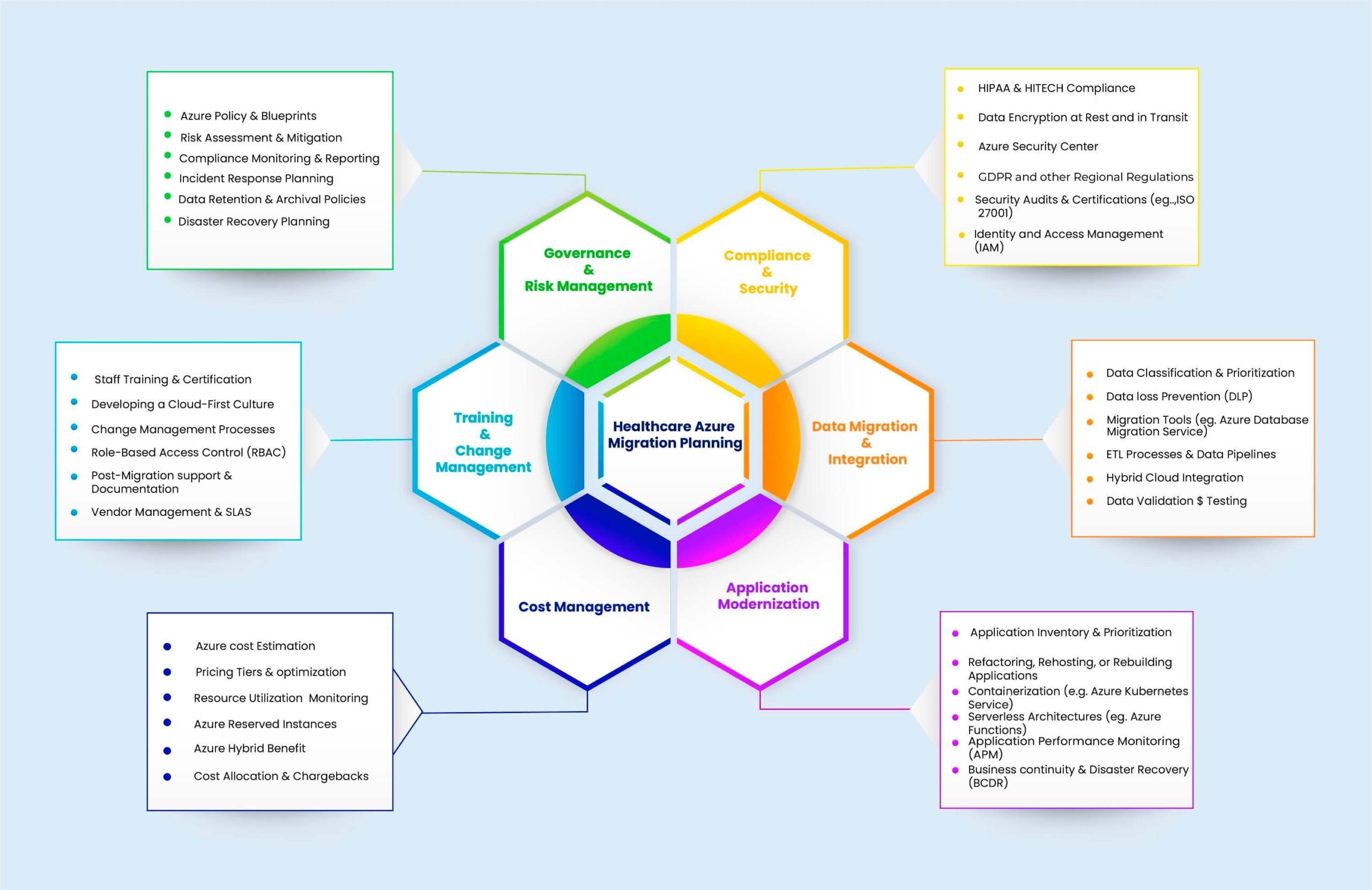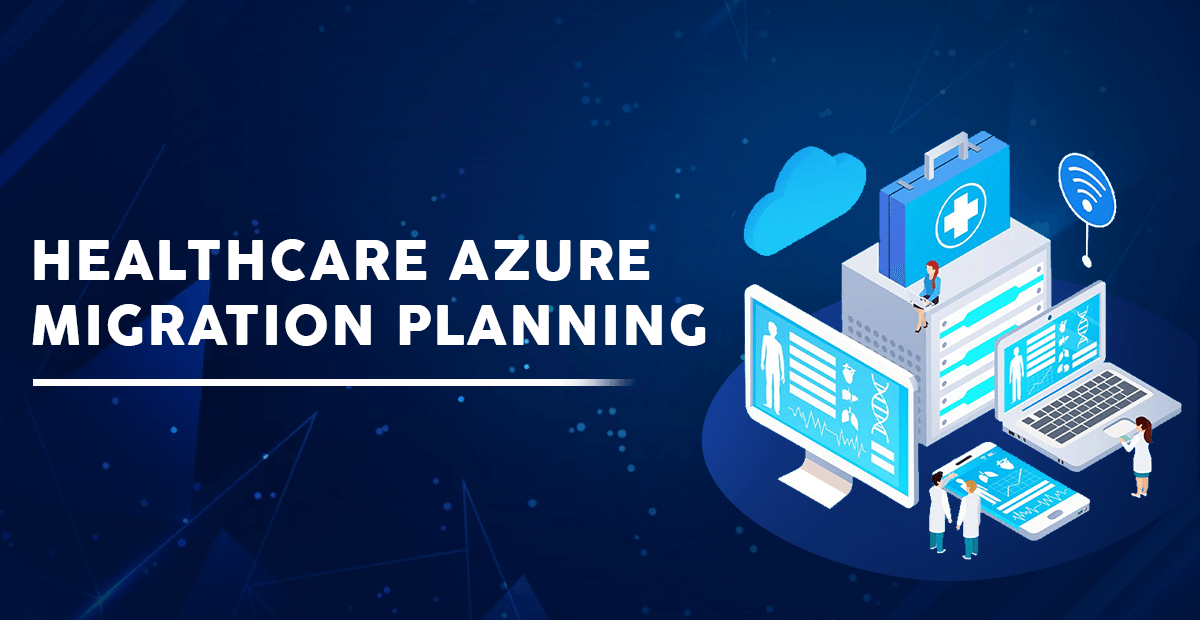Healthcare Azure Migration Planning
Welcome to our blog on Healthcare Azure migration planning! In this post, we will provide you with valuable insights to help you make the most of Azure’s extensive capabilities and services, all while prioritizing compliance, security, and efficiency.
Essential elements of a successful Healthcare Azure migration planning process, ensuring a seamless transition for your organization.

- Prioritize Compliance & Security: Data privacy is paramount in healthcare. Azure provides state-of-the-art tools and services like Azure Security Center, encryption, and ensure your organization meets HIPAA, HITECH, GDPR, and other regulatory standards. Ensure that you have a robust plan in place to securely migrate patient records, sensitive information, and other critical data to the Healthcare Azure platform. Implement encryption, access controls, and regular data backups to safeguard against potential breaches.
- Plan Your Data Migration: Strategically classify, prioritize, and establish a solid data migration approach using Azure Database Migration Service and other tools. Integrate hybrid cloud environments and maintain data integrity throughout the process. Before embarking on the migration journey, it’s crucial to conduct a thorough assessment of your current infrastructure. Evaluate your hardware, software, and network capabilities to determine compatibility and identify any potential roadblocks.
- Modernize Applications: Capitalize on Azure’s offerings to refactor, rehost, or rebuild your applications, and employ services like Azure Kubernetes Service and Azure Functions to adopt containerization and serverless architectures.
- Optimize Costs: Stay vigilant about Azure cost estimation and optimization, utilizing features like Azure Reserved Instances, Azure Hybrid Benefit, and resource utilization monitoring, to ensure maximum cost efficiency.
- Foster a Cloud First Culture: Successful migration also depends on user adoption and training. Conduct comprehensive training sessions to familiarize your staff with the new system, its features, and functionalities. Provide ongoing support to address any challenges or queries that may arise during the transition period.
- Emphasize Governance & Risk Management: Use Azure Policy, Blueprints, and other tools to manage risks, monitor compliance, and establish data retention policies that protect your organization from potential incidents.
- Testing and Performance Optimization: Thoroughly test the Healthcare Azure platform before going live to identify and rectify any potential issues. Optimize system performance by fine-tuning configurations, conducting load tests, and ensuring seamless integration with existing workflows.
- Continuous Monitoring and Optimization: Once the migration is complete, it’s essential to continuously monitor the performance and effectiveness of Healthcare Azure. Regularly review system analytics, gather feedback from users, and implement necessary refinements to optimize the platform’s utilization.
Conclusion
Migrating to Healthcare Azure can revolutionize your healthcare organization’s operations, improve data security, and enhance patient care. By following a well-planned migration strategy, actively involving stakeholders, and prioritizing user adoption, you can ensure a seamless transition to this powerful cloud-based solution. Embrace the future of healthcare with Healthcare Azure and unlock a host of benefits for your organization and patients alike.
